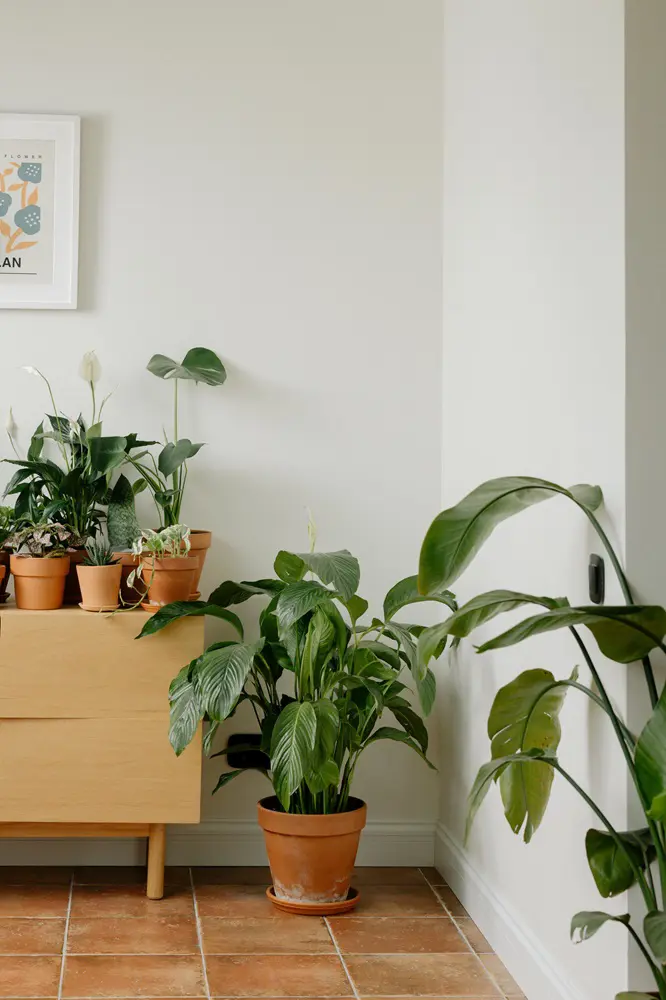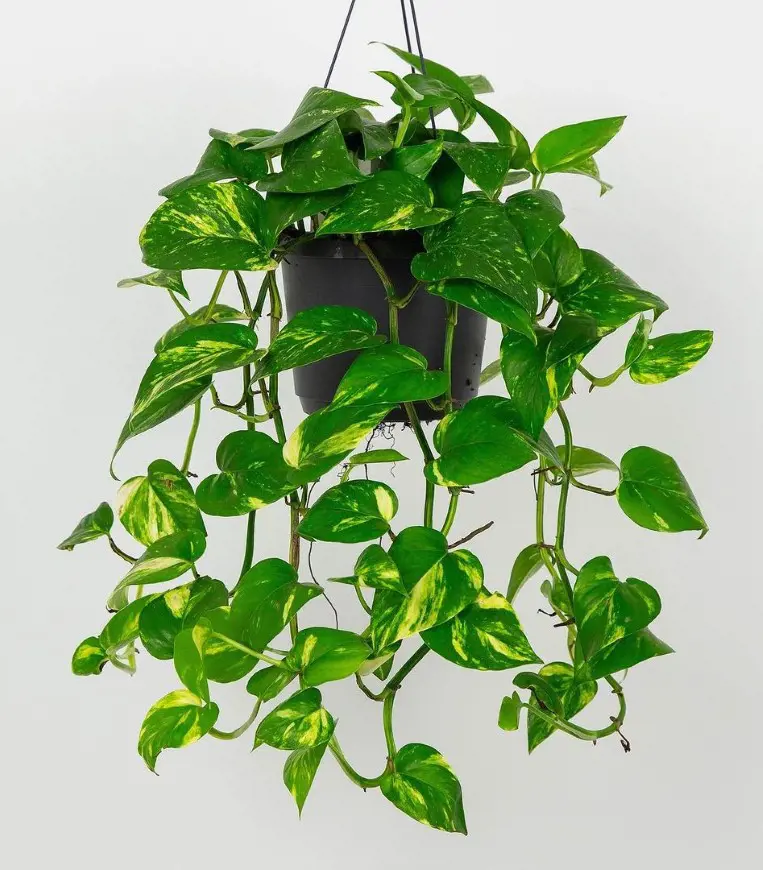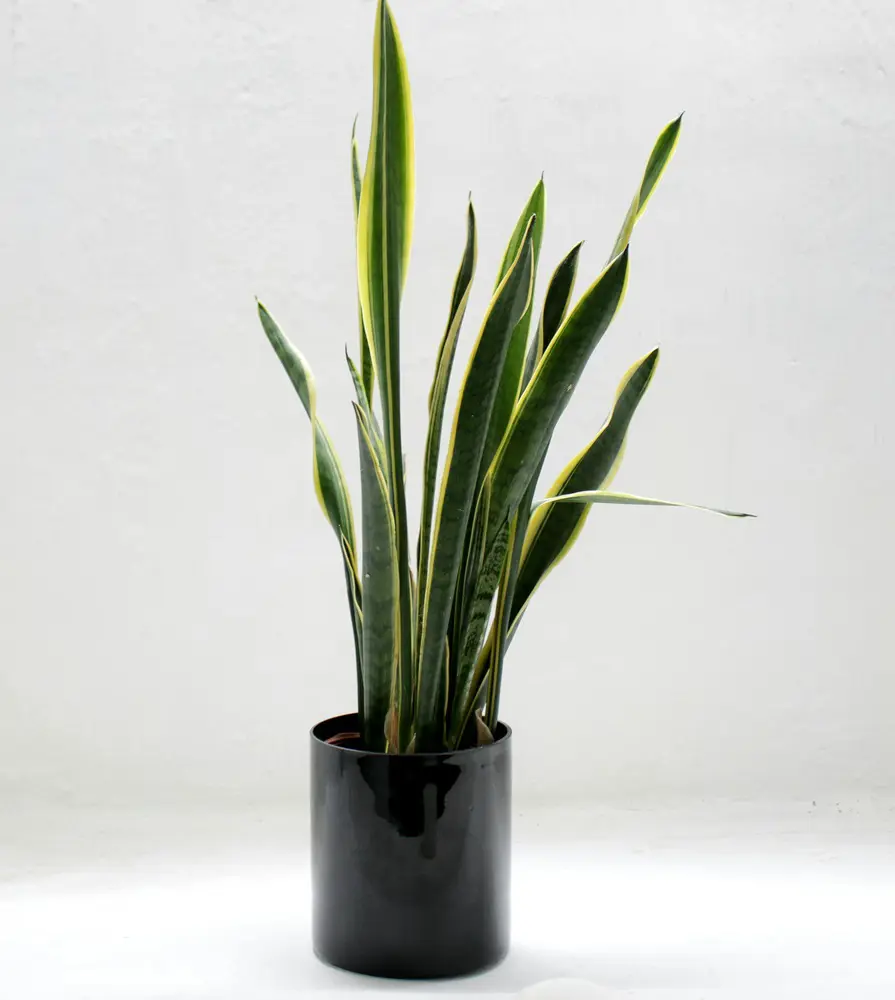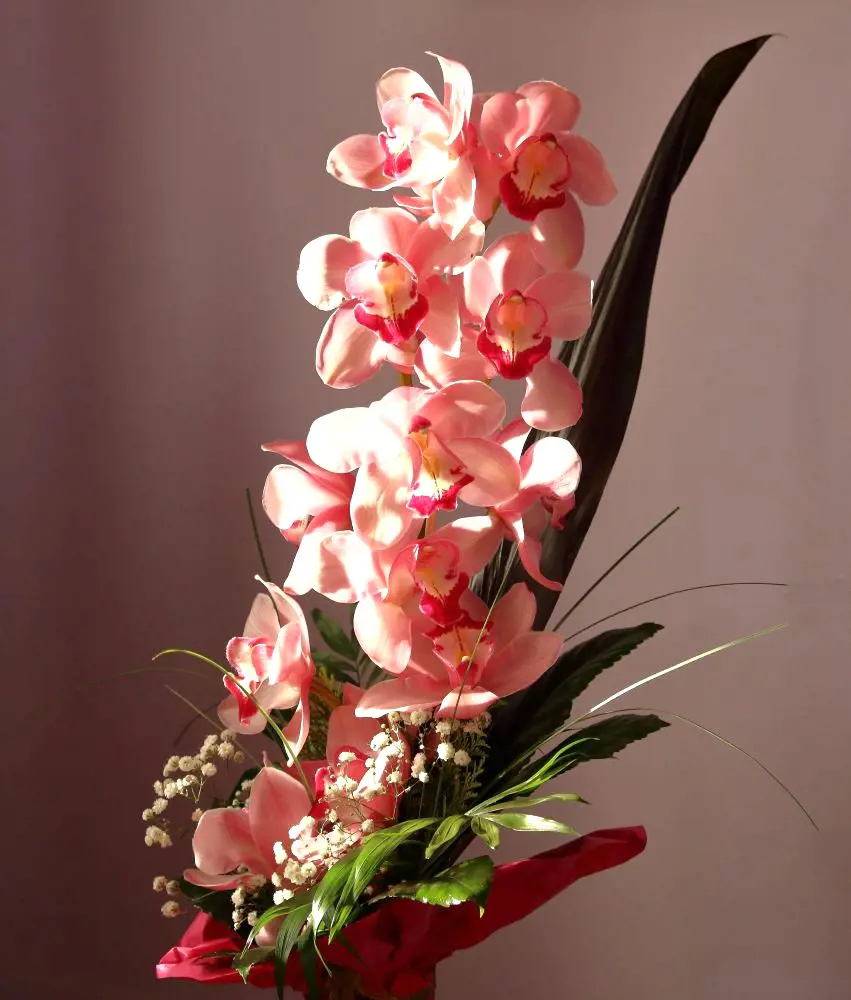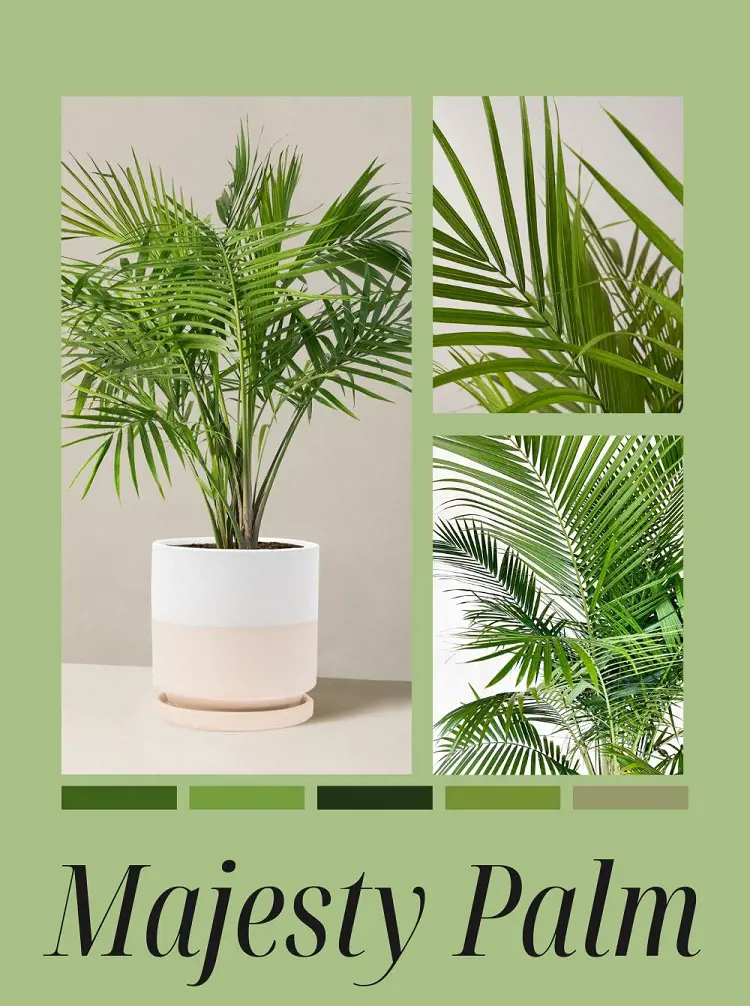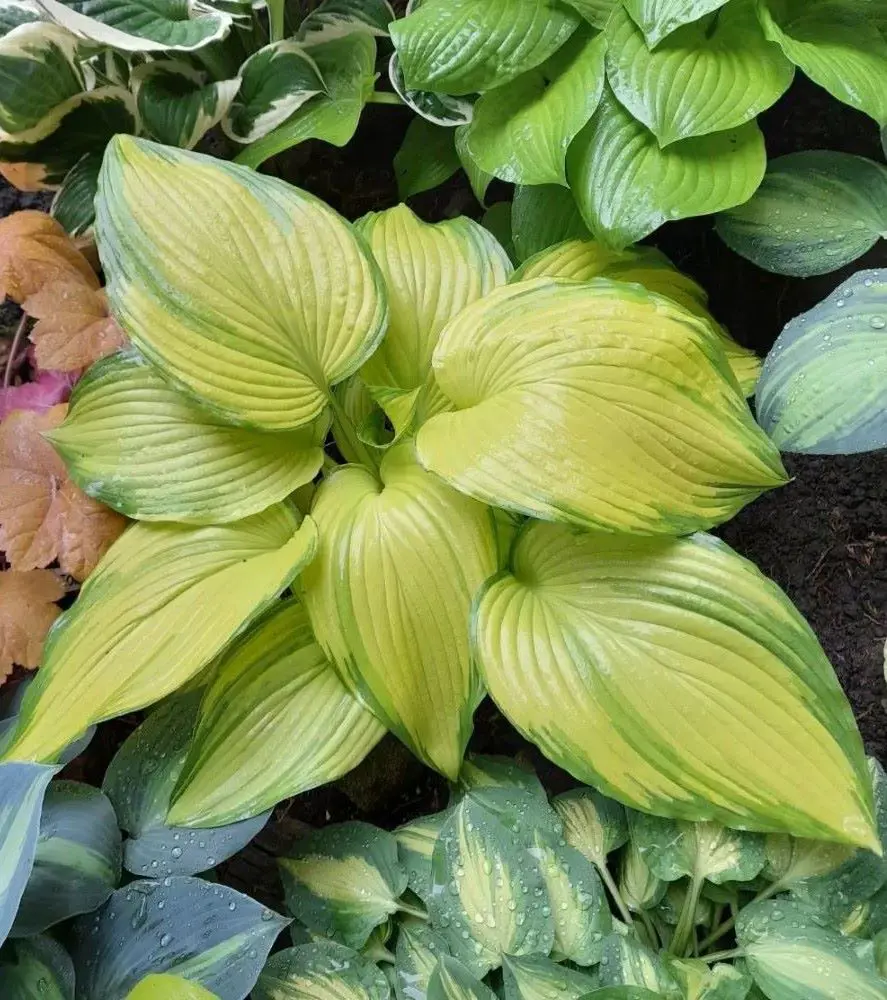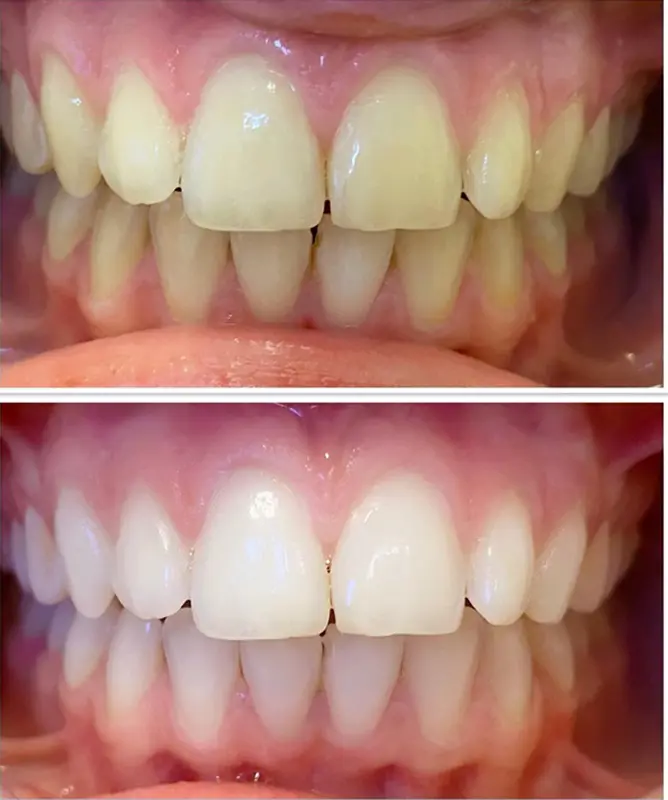String of Dolphins Plant Care Tips and Growing Guide
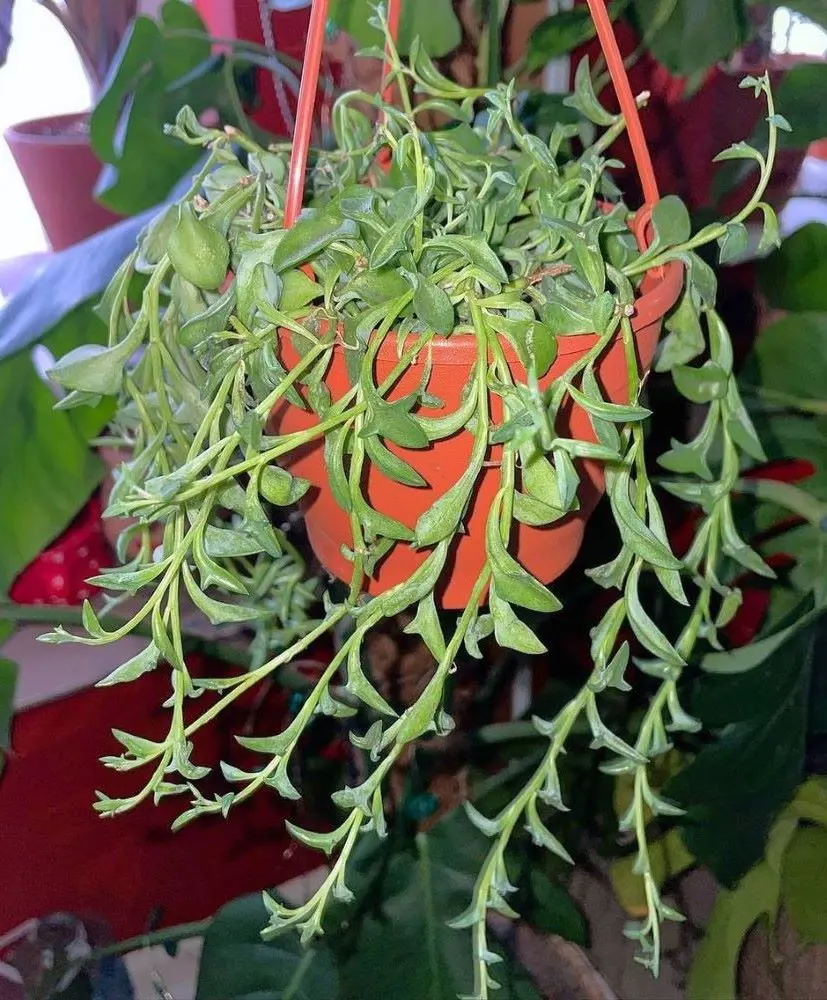
This post may contain affiliate links. If you make a purchase through links on our site, we may earn a commission.
String of Dolphin is a stunning succulent that resembles a pod of leaping dolphins. It has gained popularity among succulent enthusiasts and collectors for its whimsical appearance and relatively low maintenance requirements. It is often sought after for its decorative value in indoor gardens, terrariums, and succulent arrangements.
In addition to being a beloved ornamental plant, the String of Dolphins can also symbolize grace, intelligence, and playfulness, reflecting the qualities associated with dolphins in various cultures and traditions.
String of Dolphins Overview
| Scientific Name | Senecio peregrinus |
| Common Names | String of dolphins, Dolphin plant, Flying dolphins, Dolphin necklace |
| Family | Asteraceae |
| Type | Succulent |
| Size | 6 inches tall |
| USDA hardiness zone | 9b to 11b |
| Bloom Time | Spring |
| Toxicity | Toxic to dogs and cats |
| Native To | Southwest Africa |
What is String of Dolphins?
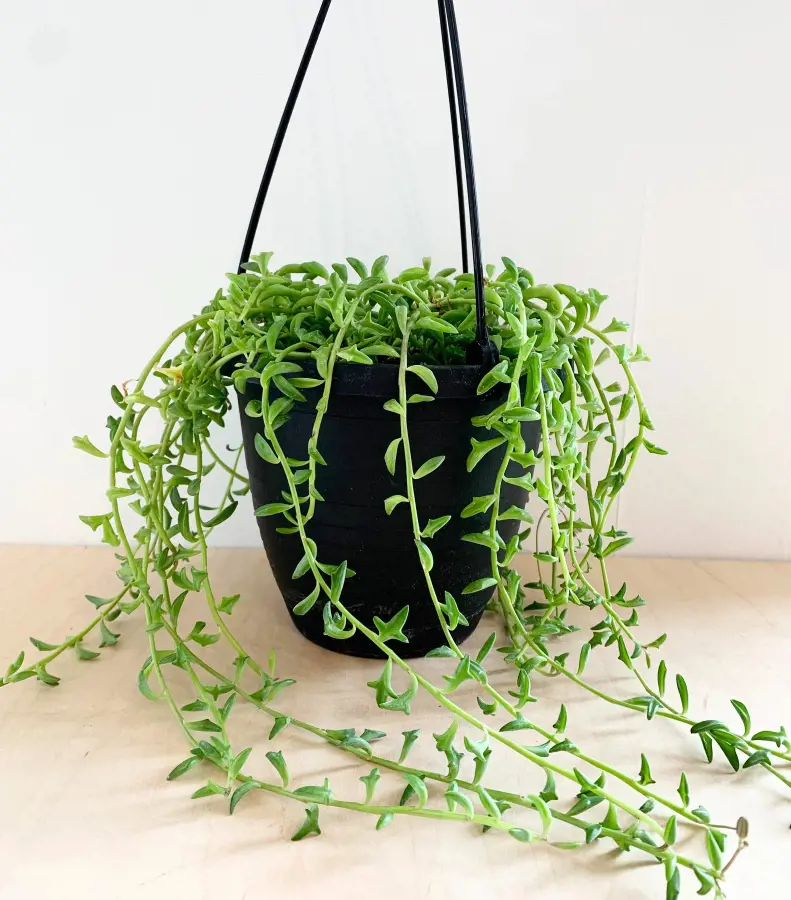
The String of Dolphins is a hybrid plant, believed to be a cross between Senecio rowleyanus (String of Pearls) and Senecio articulatus (Hot Dog Cactus). It was first developed in Japan and has since gained popularity among succulent enthusiasts worldwide.
The plant features trailing stems that produce pairs of small, curved leaves resembling miniature dolphins. The leaves are typically a bluish-green color with lighter markings or variegation along the edges.
String of Dolphins Care
String of dolphins plant is a charming and low-maintenance succulent plant that delights with its whimsical appearance and easy-care nature. While it is not the most challenging plant to grow, it does have specific requirements that need to be met to ensure its health and vitality.
With proper care and attention, these indoor vine plants can thrive and delight with their unique foliage and trailing habit. Here are some factors to consider when determining the level of care required:
Light
String of Dolphins plants prefer bright, indirect light. They thrive in locations with plenty of natural sunlight, such as south- or west-facing windows, but can also tolerate some direct sunlight, especially during the morning or late afternoon. However, prolonged exposure to intense sunlight may cause leaf burns.
Water
Like most succulents, these plants are susceptible to root rot if overwatered. It's essential to allow the soil to dry out partially between waterings to prevent waterlogged conditions. Water thoroughly when the top inch of soil feels dry, then allow excess water to drain away completely. During the dormant period in winter, reduce the frequency of watering to avoid soggy soil.
Soil
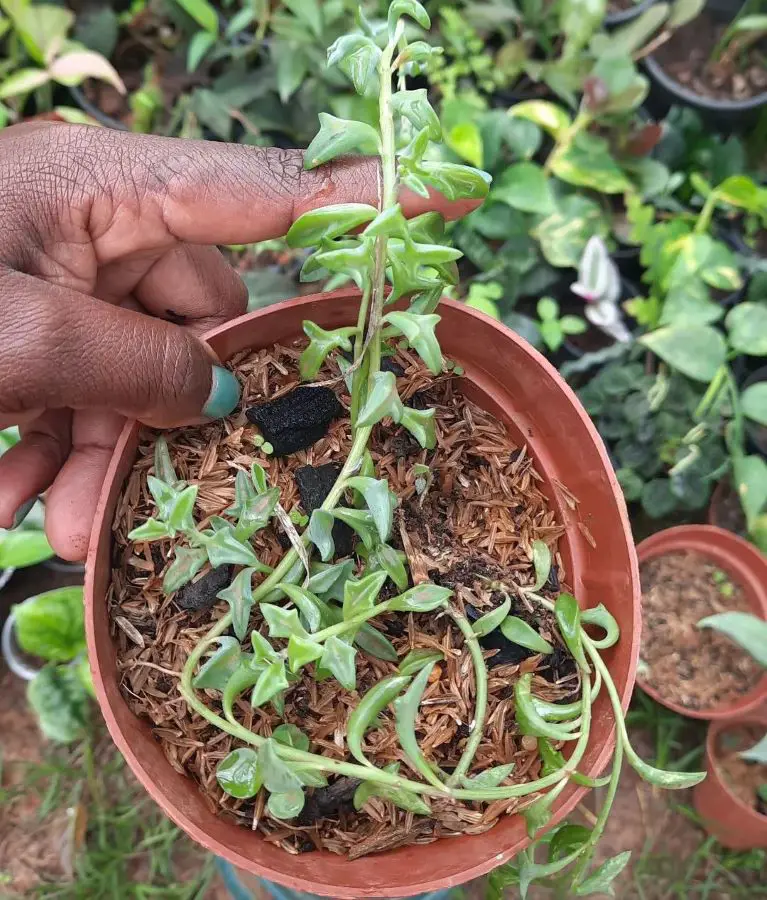
Well-draining soil is essential for String of Dolphins plants to prevent water from pooling around the roots. Plant them in a cactus or succulent potting mix amended with perlite or coarse sand to ensure proper drainage.
Temperature
Dolphin succulents prefer moderate temperatures between 65°F and 75°F (18°C to 24°C). They can tolerate slightly cooler temperatures at night but should be protected from frost and extreme heat.
Humidity
While they don't require high humidity, they may benefit from occasional misting, especially in dry indoor environments. However, be cautious not to over-mist, as excessive moisture can promote fungal diseases.
Fertilizer
Dolphin succulent plants do not have strict fertilizer requirements, but providing them with occasional fertilization during the growing season can help promote healthy growth and vibrant foliage. Fertilize during the active growing season, which typically occurs in spring and summer. Avoid fertilizing during the plant's dormant period in winter, when growth slows down.
Pruning
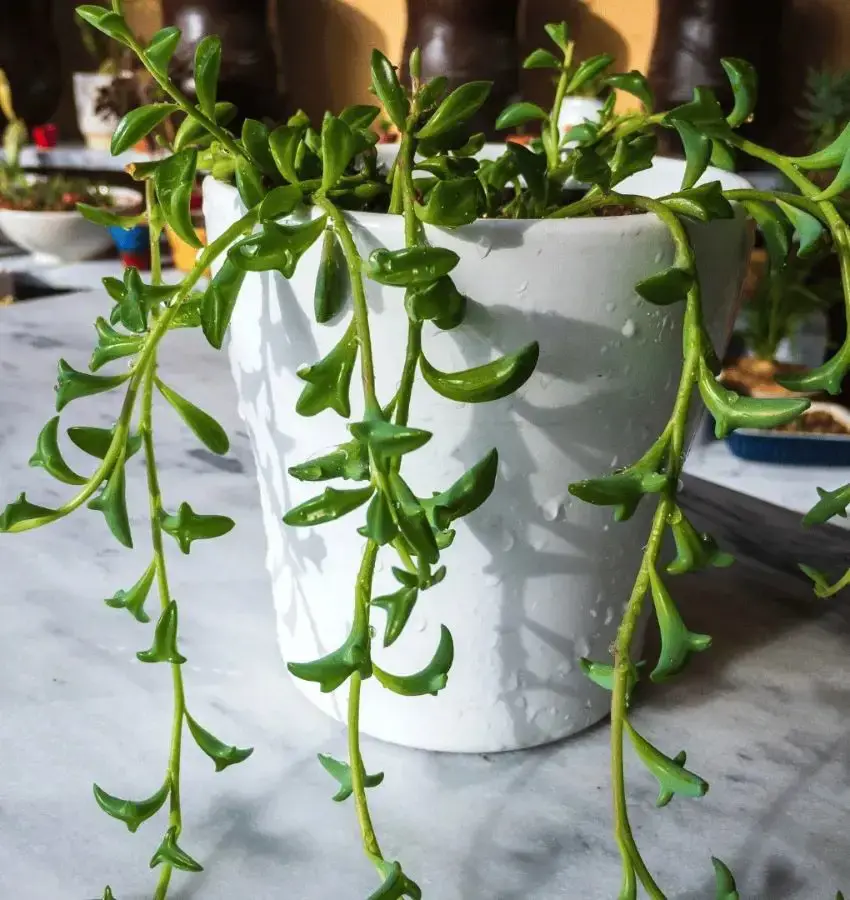
Pruning strings of dolphins, a unique succulent known for its cascading, dolphin-shaped leaves, can help maintain its shape and encourage healthy growth. Here's a guide on how to prune them effectively:
Timing and Frequency
Pruning is best done in the spring or early summer when the plant is actively growing. Aim to prune the strings of dolphins once a year to keep them tidy and prevent overgrowth.
Tools Required
You'll need sharp, clean pruning shears or scissors. Disinfecting the tools with rubbing alcohol before and after use helps prevent the spread of diseases.
Pruning Techniques
- Start by examining the plant for any dead, damaged, or diseased stems. Trim these off at their base to promote new growth and prevent further issues.
- Look for excessively long or straggly stems that disrupt the plant's appearance. Trim these back to a desired length, cutting just above a leaf node or joint.
- To encourage branching and bushiness, consider pinching off the tips of longer stems. This stimulates new growth from the sides and creates a fuller appearance.
- Avoid cutting into the main stems excessively, as this can weaken the plant's structure and cause it to become leggy.
- Step back periodically while pruning to assess the plant's overall shape and symmetry, making adjustments as needed.
After pruning, provide adequate sunlight, water, and occasional fertilization to support the plant's health and growth.
Potting and Repotting
String of dolphins plants needs to be potted in a pot or container with drainage holes at the bottom to allow excess water to escape. Proper drainage is crucial for preventing waterlogged soil, which can lead to root rot. Select a pot that is slightly larger than the plant's current container to accommodate growth but not excessively large, as this can lead to overwatering.
Repot your String of Dolphins plant when it outgrows its current container or becomes root-bound. Signs that your plant may need repotting include roots emerging from the drainage holes, slow growth, or the plant becoming unstable in its pot. Spring is generally the best time for repotting, as the plant is entering its active growing phase. Here is how to repot them:
- Water the plant for a day or two before repotting.
- Gently remove the plant from its current pot, being careful not to damage the roots.
- Inspect the roots and trim any damaged or rotting ones.
- Add fresh potting mix to the new pot.
- Position the plant in the center of the new pot at the same depth as before.
- Fill in around the roots with more potting mix, pressing lightly to remove air pockets.
- Water the plant thoroughly, allowing excess water to drain.
- Let the plant acclimate to its new pot for a few days before watering again.
Propagating String of Dolphins
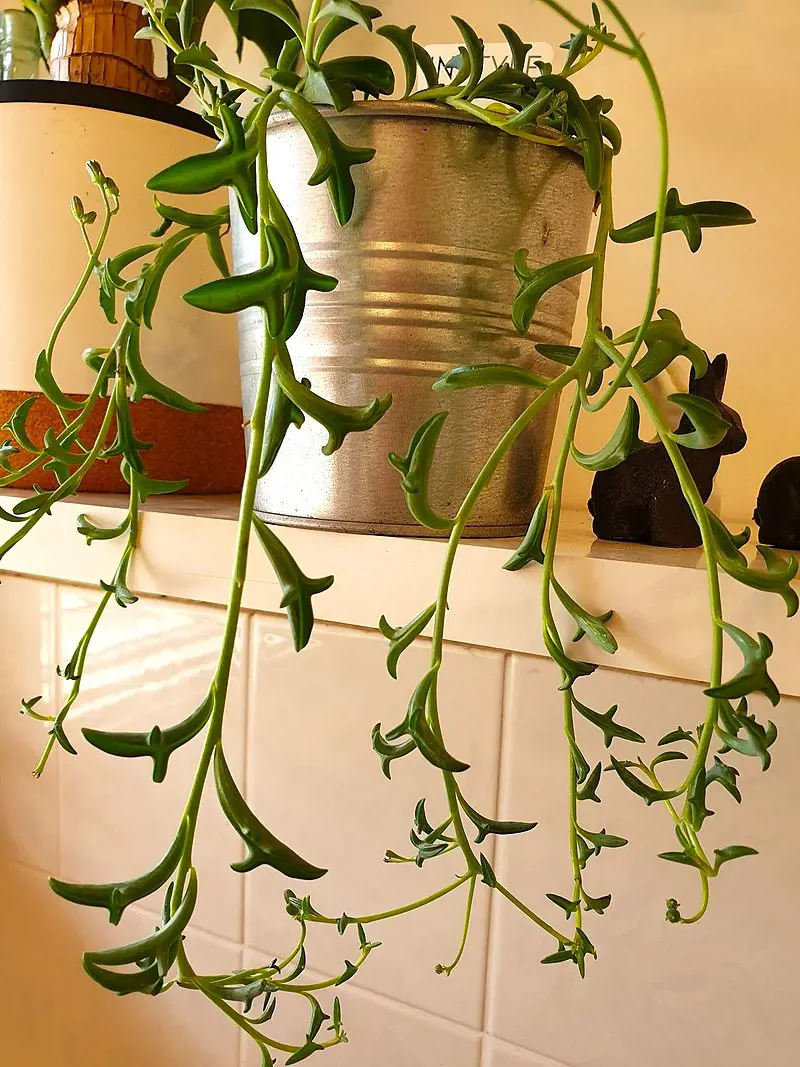
Propagating the String of Dolphins (Senecio peregrinus) is relatively straightforward and can be done through stem cuttings. The best time to propagate String of Dolphins is during the active growing season, which typically occurs in spring and summer. This is when the plant is actively producing new growth, making it more receptive to rooting.
This stem-cutting propagation can be done in both water and soil. For soil propagation, take a healthy stem cutting, remove the lower leaves, and let the cut end dry for a day. Plant the cutting in well-draining soil, burying the cut end and ensuring at least one leaf node is below the soil surface.
How To Grow Strings of Dolphins from Seed
Growing a string of dolphins from seeds can be a rewarding but somewhat challenging process, as this plant is typically propagated through stem cuttings rather than seeds. Follow these steps to grow a string of dolphins from seeds:
- Obtain fresh and viable seeds from a reputable source.
- Sow seeds in well-draining soil, pressing them lightly onto the soil surface.
- Keep the soil consistently moist, and place it in a warm, bright location with indirect sunlight.
- Be patient, as germination may take several weeks.
- Maintain consistent moisture and provide bright, indirect light.
- Move seedlings to individual pots when they have true leaves.
String of Dolphins Rotation
Rotate your string of dolphins regularly to ensure even growth and a full, cascading appearance. These plants naturally grow towards the light source. In an indoor environment, this usually means a window.
If left unrotated, your string of dolphins will reach and lean toward the window, resulting in uneven growth with leggy stems and leaves on only one side. Regular rotation prevents this uneven development and encourages your plant to grow in a fuller, more symmetrical manner.
It is generally recommended to rotate these succulent types once a week. This ensures consistent exposure to light from all sides and promotes balanced growth. Here is how you can rotate them:
- Note the window direction providing the most light.
- Gently lift and rotate the pot 90° counter-clockwise toward the light source.
- Rotate consistently, once a week, for balanced growth.
- Mark the pot to remember the last rotation direction.
- Rotate in both directions for even exposure if you have multiple light sources.
Common Pests And Diseases
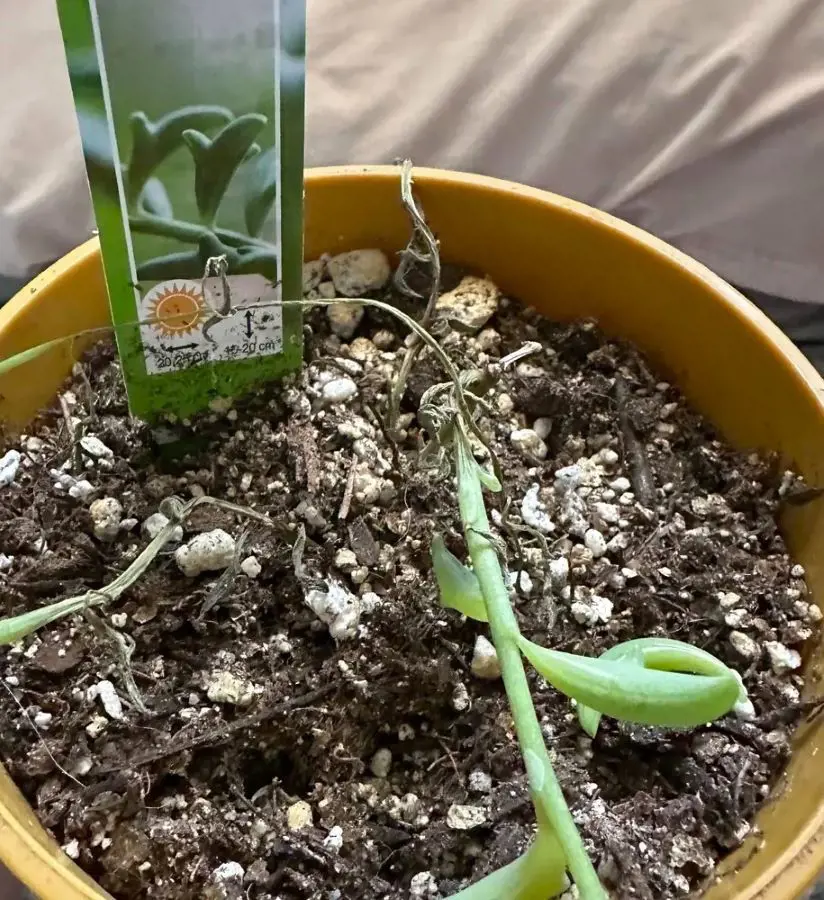
Common pests and diseases that can affect String of Dolphins plants include mealybugs, spider mites, and root rot. Mealybugs are small, white, cottony insects that feed on the plant's sap, often clustering in leaf axils and along stems. Spider mites are tiny pests that thrive in dry conditions and can cause stippling and webbing on the plant's foliage.
Both pests can be treated with insecticidal soap or neem oil and applied according to the product's instructions. Additionally, overwatering or poorly draining soil can lead to root rot, a fungal disease that causes the plant's roots to decay.
Winter Care
Dolphin plant may require slightly different care to accommodate their reduced growth and dormancy during the winter months. A string of dolphin plants is sensitive to cold temperatures and drafts. Keep them away from drafty windows and doors, and avoid placing them near heating vents or radiators, which can cause the air to become too dry.
Repotting can stress the plant, and it's best to wait until spring, when the plant is actively growing and better able to recover from the disturbance. Days are shorter in winter, so your plant may receive less natural light.
Types of String of Dolphins

There are primarily two recognized types of string of dolphins plants:
Senecio peregrinus
This is the original string of dolphin plants, featuring leaves that resemble leaping dolphins. The leaves have a distinct dolphin-like shape with small, fin-like projections.
Senecio rowleyanus 'Curio rowleyanus f. variegata'
This is a variegated variety of strings of dolphins, also known as a variegated dolphin necklace or a variegated string of dolphins. It has the same dolphin-shaped leaves as Senecio peregrinus but with variegated coloring, typically displaying shades of green, cream, or white.
These are the two main types recognized by horticulturists and enthusiasts, but variations may exist due to cultivation practices and natural mutations.
Challenges With String of Dolphins
While a string of dolphins are generally easy-going plants, there are a few problems they may encounter. Here are some of the most common problems faced by them and how to prevent them:
Overwatering
Excessive moisture can lead to root rot and other fungal diseases.
Prevention: Allow the soil to dry out between waterings, and ensure proper drainage by using a well-draining potting mix.
Underwatering
Insufficient watering can cause the plant to wilt and the leaves to shrivel.
Prevention: Water the plant when the top inch of soil feels dry, and adjust the watering frequency based on environmental conditions.
Pests
Mealybugs, aphids, and spider mites are common pests that can infest the strings of dolphin plants, sucking sap from the leaves and causing damage.
Prevention: Regularly inspect the plant for signs of pests, and treat infestations promptly with insecticidal soap or neem oil.
Sunburn
Direct sunlight, especially during the hottest part of the day, can scorch the delicate leaves of strings of dolphin plants.
Prevention: Place the plant in a location with bright, indirect light and provide some protection from intense sun exposure, especially in summer.
Leggy Growth
Insufficient light can cause the plant to become leggy, with elongated stems and sparse foliage.
Prevention: Ensure the plant receives adequate light by placing it near a bright window or providing supplemental grow lights.
Fungal Diseases
Conditions of high humidity or poor air circulation can promote fungal diseases such as powdery mildew or leaf spot.
Prevention: Maintain good air circulation around the plant, avoid overcrowding, and water the plant at the soil level to minimize moisture on the leaves.
Recent posts
Plant Care
Plant Care
How To Grow and Care For Peace Lily Plant
The Peace Lily is an indoor plant that is most valued for its beautiful and shiny green leaves as well as the white blooms. Hard and tolerant, it’s naturally a low-maintenance addition to your plant collection. If you are confused, let us tell ...
Plant Care
Pothos Plant Care And Growing Guide
Adding a Pothos plant (Devil’s Ivy) to your home benefits the environment and aesthetic of your personal space. It's easy to maintain and is loved for it's ability to enhance indoor air quality by removing toxins like formaldehyde, benzene, and...
Plant Care
Snake Plant Care and Growing Guide
Snake plants require low maintenance, and low light and are almost impossible to kill, making them a perfect plant for beginners and seasoned gardeners. In this guide, we will explore essential care tips and optimal growing conditions for snake plant...
Plant Care
Orchid Plants Care: 11 Tips And Tricks You Should Follow
If you love gorgeous orchids but are worried they're too high-maintenance, don't worry. This guide is like a cheat sheet for orchid newbies. Forget fancy words and confusing schedules—we're talking about 11 easy tips to keep your orchid happy a...
Plant Care
How To Plant, Grow and Care Majesty Palm
The majestic palm, scientifically known as Ravenea rivularis, makes for a stunning indoor tree with its lush and grand fronds. Originating from Madagascar's river banks, this resilient houseplant is cherished not only for its beauty but also for its ...
Plant Care
How To Grow And Care For A Hosta Plant
Hosta plants are widespread perennials, often grown for their beautiful and diverse foliage. They are extremely easy to care for and can thrive in various conditions, particularly shade or semi-shade. These hardy plants can last for many years and re...
